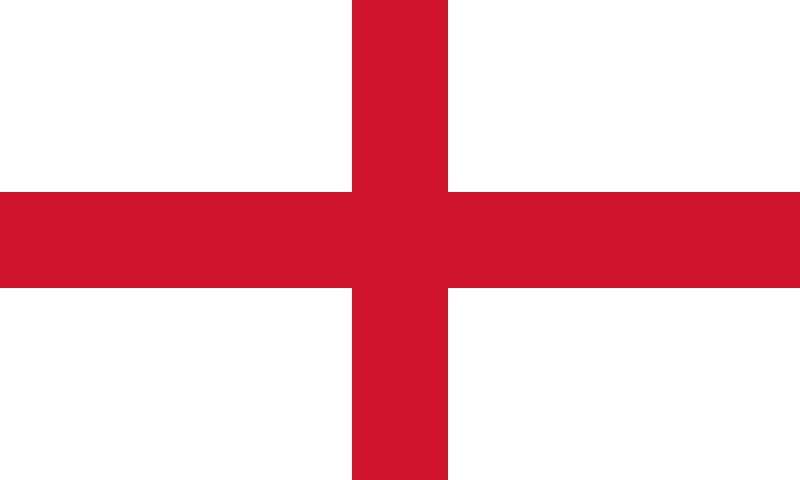 |
 |
 |
 |
 |
 |
BATTAGLIA NAVALE DI BARFLEUR
NAVAL BATTLE OF BARFLEUR
(29 MAGGIO - 02 GIUGNO 1692)
LA PIU' GRANDE BATTAGLIA NAVALE DELLA STORIA
|
|
STORIA DELLA BATTAGLIA
HISTORY OF THE BATTLE
LA BATTAGLIA NAVALE MINUTO PER MINUTO
NAVAL BATTLE OF BARFLEUR MINUTE FOR MINUTE
LA BATTAGLIA DI CHERBOURG /NAVAL BATTLE OF CHERBORUG
(31 MAGGIO 1692)
(liberamente tratto da "Venticinque secoli di guerra sul mare" di Jacques Mordal, edizioni U. Mursia & C. Milano)
Una spessa caligine regnò per tutta la notte sul mare a favorire la ritirata dell'armata francese alla quale, fin dall'una del mattino, Tourville aveva ordinato di salpare le ancore per ripiegare verso occidente. Amfreville, Villette e Panetie erano riusciti durante la notte a riunire ventisette vascelli ai quali poco dopo si univa lo stesso Tourville con altri sette, per cui mancavano ancora all'appello soltanto nove bastimenti, con Gabaret, Langeron e Nesmond!
Solo alle otto del mattino del giorno 30, quando la foschia si fu levata, gli Olandesi scorsero la squadra francese in ritirata con una leggera brezza di levante in poppa e una buona lega di vantaggio. Russell, avvertito, ordinò la caccia; ma nella tarda mattinata il vento tornò a libeccio, e alle quattro del pomeriggio, incapaci di rimontare il flusso di marea, le due flotte si videro costrette a dar fondò davanti a Cherbourg.
Sfortunatamente per i Francesi, Tourville non aveva saputo rassegnarsi ad abbandonare il suo glorioso Sole il Royal sforacchiato da tutti i lati e che ora rallentava notevolmente la navigazione dell'intera flotta.
A causa sua la squadra francese aveva perduto in parte il suo vantaggio, e quando al sopravvenire del riflusso, alle dieci di sera, le due flotte salparono nuovamente le ancore, gli Anglo-olandesi la tallonavano da vicino.
Per fortuna il Britannia, poco dopo la mezzanotte, perdette il trinchetto danneggiato durante il combattimento; le altre navi della squadra rossa britannica gli restarono accanto mentre riassettava l'attrezzatura.
Ma Ashby e gli Olandesi continuavano a seguire la ritirata che Tourville aveva deciso di effettuare a sud delle isole anglo-normanne attraverso lo stretto di Blanchard e il passo della Deroute.
L'avversario, che non se n'era accorto tempestivamente, diresse al largo dei Casquets, cosi che Panetie che conduceva la colonna ebbe la fortuna di far passare sani e salvi ventidue vascelli, e di trovare a Saint-Malo un nascondiglio dal quale il nemico non riuscì a stanarlo.
L'intera armata avrebbe forse potuto salvarsi non fosse stato per il ritardo del gruppo Sole il Royal che mancò un'inversione di marea e perdette una dopo l'altra le sue ancore.
Tourville dovette infine rassegnarsi a trasferire la sua insegna sull' Ambitieux accanto a quella di Villette. Ma era troppo tardi per salvare il Sole il Royal che, con il Triomphant e l'Admirable andò ad incagliare sulla costa di Cher- bourg il 31 maggio alle due del mattino.
Altre dodici navi, non essendo riuscite a superare lo stretto di Blanchard, andarono a cercar rifugio a Sainl Vaast la Hougue sotto la condotta di Tourville che in quell'ancoraggiu sperava di poter contare, per garantirne la sicurezze, sull'assistenza degli uomini di Giacomo Il e del Maresciallo de Bellefonds.
Con qualche batteria costiera e un minimo di assistenza da parte del. l'armata di terra, la flotta francese sarebbe stata salva. Barfleur, senza indomani, sarebbe rimasta un trionfo francese.
Nel 1688, scrive un testimonio citato da La Roncière, Nicolas-Josepl Foucault, il re aveva iniziato la costruzione della cittadella di Cherbourg affidandola a M. de Vauban.
I lavori erano già molto avanti quando « M. de Louvois, per far dispetto a M. de Seignalay più che per il bene dell'amministrazione, ottenne dal re un ordine di demolizione ».
Ancora il Louvois cht si era opposto alla costruzione delle fortificazioni previste nel 1690 per la difesa di Saint Vaast la Hougue; e Tourville, mancando una volta tanto di previdenza, non aveva insistito abbastanza ritenendo difficile guadagnare la Hougue dopo un combattimento ingaggiato fra Ouessant e capo Lizard, all'imbocco della Manica.
Per cui, quei disgraziati vascelli potevano contare soltanto su se stessi per respingere l'assalto che gli Inglesi ci si poteva fare assegnamento non avrebbero mancato di dar loro.
Esso s'iniziò fin dal 31 maggio, a Cherbourg dove Ralph Delawal si presentò all'attacco del Sole il Royal e dei suoi due compagni d'infortunio appena poche ore dopo che avevano incagliato, con il Saint Albans, il Ruby e due brulotti, e sostenuto a breve distanza da un'altra quindicina di navi. Fu un colpo a vuoto.
I marinai del Capitano Desnos, in comando sul Sole il Royal, lo respinsero a cannonate. Ma quello tornò il giorno dopo cambiando sistema. Rinunciando ad avvicinarsi con le navi grosse, fece armare tutte le lance disponibili per scortare i brulotti.
Gli artiglieri francesi ne distrussero uno, lo Hound, che esplose; un secondo si spaccò sugli scogli, ma altri due arrivarono a segno e il Blaze, comandante Thomas Heath, riusci ad agganciare di poppa il grande treponti che ancora sparava.
Il Sole il Royal prese fuoco ed esplose « con spaventoso fracasso » proiettando in aria « come mosche » i suoi marinai che ricadevano sulla spiaggia.
Il Triumphant fu vittima del brulotto Wolf, e l'Admirable venne incendiato dalle lance. Louvois poteva esser soddisfatto!
La misura di ciò che avrebbero potuto fare le batterie costiere di cui aveva impedito la costruzione, la dette uno sgorbio di fortino con sei pezzi situato presso la fossa dei Galets allontanando gli assali tori durante il primo attacco. Un'opera, per quanto modesta, avrebbe costretto le navi di Delawal a restare fuori portata, e le cose sarebbero potute andare diversamente.
NAVAL BATTLE OF CHERBORUG (31 MAY 1692)
A thick haze reigned for the whole night on the sea to favor the retreat of the army French to which, since the one of the morning, Tourville had ordered to set sail the anchors to refold toward west. Amfreville, Villette and Panetie had succeeded during the night in gathering twenty-seven vessels to which shortly after the same Tourville united him with other seven, for which they missed anchors only to the appeal nine ships, with Gabaret, Langeron and Nesmond!
Only to the eight of the morning of the day 30, when haze was raised, the Dutch perceived the French team in retreat with a light breeze of east in stern and a good league of advantage. Russell, warned, he ordered the hunting; but in the late forenoon the wind returned to libeccio, and at four o'clock in the afternoon, incapable to reassemble the flow of tide, the two fleets were seen forced to give it founded in front of Cherbourg.
Unfortunately for French, Tourville had not known how to resign themselves to abandon his glorious Sun the Royal sforacchiato from all the sides and what time it notably the navigation of the whole fleet.
To his cause the French team had lost partly its advantage, and when to arrive unexpectedly some reflux, at ten o'clock in the evening, the two fleets again set sail the anchors, the Anglo-Dutch tailed nearby her from.
Luckily Britain, shortly after the midnight, perdette the damaged foremast during the fight; the other ships of the British red team stayed nearby him while it was rearranging the equipment.
But Ashby and the Dutch kept on following the retreat that Tourville had decided to effect to south of the Anglo-Norman islands through the narrow one of Blanchard and the footstep of the Deroute.
The adversary, that not if at the right moment aware n'era directed offshore the Casquetses, so that Panetie that the column conducted had the fortune to make to pass healthy and safe twenty-two vessels, and to find to Saint-bad a hideaway from which the enemy didn't succeed in uncovering him/it.
The whole army would perhaps have been able to be saved themselves he had not been for the delay of the group Alone the Royal that it missed an inversion of tide and perdette one after the other its anchors.
Tourville you finally have to resign himself to transfer his insignia sull' Ambitieux close to that of Villette. But it was to save the Sun the Royal too late that, with the Triomphant and the Admirable it went to hinder on the coast of Cher - bourg on May 31 to the two of the morning.
Other twelve ships, not having succeeded in overcoming the narrow one of Blanchard, they went to cercar shelter to Sainl Vaast the Hougue under the behavior of Tourville that in that ancoraggiu it hoped to be able to count, to guarantee its safeties, on the assistance of the men of Giacomo Il and the Marshal de Bellefonds.
With some coastal battery and a minimum of assistance from the. him armed with earth, the French fleet would have been safe. Barfleur, without next day, a French triumph would have remained.
In 1688, he writes a witness quoted by her Roncière, Nicolas-Josepl Foucault, the king had begun the construction of the citadel of Cherbourg submitting it to M. de Vauban.
The jobs were already very before when «M. de Louvois, to make spite to M. de Seignalay more than for the good of the administration, it got from the king an order of demolition».
He anchors the Louvois cht he was opposed to the construction of the anticipated fortifications in 1690 for the defense of Saint Vaast the Hougue; and Tourville, missing once so much of foresight, he had not insisted enough holding difficult to earn the Hougue after a fight engaged between Ouessant and head Lizard, to the entrance of the Sleeve.
For which, that unfortunate vessels could count only on him same to reject the assault that the English could be made us assignment they would not have missed to give them.
It was begun since May 31, to Cherbourg where Ralph Delawal introduced him to the attack of the Sun the Royal and of his two companions of accident as soon as few times after they had hindered, with the Saint Albans, the Ruby and two brulottis, and sustained not too far from another two weeks of ships. It was a hit to empty.
Captain Desnos's sailors, in command on the Sun the Royal, rejected it to cannonades. But that returned later the day changing system. Abdicating to draw near with the big ships, it made to arm all the available lances to escort the brulottis.
The French artillerymen destroyed one of them, the Hound, that exploded; a second broke him on the rock-cliffs but others two they reached sign and the Blaze, commander Thomas Heath, succeeded in hooking of stern the great treponti that anchors he shot.
The Sun the Royal caught fire and exploded «with dreadful din» projecting in air «how mo - sche» his sailors that reverted on the beach.
The Triumphant was victim of the brulotto Wolf, and the Admirable was set on fire by the lances. Louvois could be satisfied!
The measure of what they would have been able to make the coastal batteries of which he had prevented the construction, the said ones a scribble of bunker with six pieces placed near the pit of the Galetses getting further you attack him bulls during the first attack. A work, however modest, he would have forced the ships of Delawal to stay out course, and the things would be been able to otherwise go.
BATTAGLIA NAVALE DI BARFLEUR / NAVAL BATTLE OF BARFLEUR
LE PIU' GRANDI BATTAGLIE NAVALI /NAVAL BATTLE
NAVI DA GUERRA / WARSHIPS AND BATTLESHIPS
PORTAEREI NELLA STORIA /AIRCRAFT CARRIERS